GPS technology has allowed growers to capture variability within a field – from yield to soils, fertility, pH, varieties, variable rate application and agronomic treatments. More than likely, you have accumulated binders full of color maps and hard drives full of files.
While collecting agronomic data is getting easier, using it to make decisions can be a challenge. Visually correlating the relationship between two maps, for example, yield vs. soils, is possible but becomes mind-numbing as you collect more data layers on dozens of fields.
Maps are a great way to visualize agronomic data, but the real power for decision making is in the data file. Organizing data layers into a georeferenced database structure allows us to tackle real-world complexity that is applied agronomy. Applied agronomy at the field level is the collision of hundreds of manageable variables – it isn't rocket science; it is way more complex.
Premier Crop embraces this complexity with respect. We respect that all agronomy is local, and what drives yields and profitability changes year to year within areas of the country, across a grower's operation, field by field, and in each part of a field.
After years of helping growers and advisors analyze data to drive decisions, we’re frequently asked, "What matters most agronomically?" Our answer is always the same: There is no silver bullet. It is never one specific variable that universally drives yield variation or profitability.
It's not just plant health, variety selection, trait packages, weather impact, population, nitrogen timing, soil type, planting date, harvest date, tillage or fertility. We could go on and on.
Agronomic complexity drives many to look for simple solutions. While companies like ours continually drive to make it easier – some make "simple" solutions work only because they pretend complexity doesn’t exist.
Analyzing your agronomic data is messy. Correlation doesn't prove cause and effect. We gain confidence by seeing similar results on multiple fields across an entire operation and across thousands of anonymously and confidentially pooled acres in your area. Our experience has taught us that most growers want their agronomic advisor to help in this process. While it's hard work, we don't have to hit home runs to pay for the effort.
Agronomy is complex. There is no silver bullet that will drive yield and profitability. You must look at all variables across a wide range of acres when making important agronomic decisions.
Want to move beyond just looking at those pretty maps? Here are 3 questions to ask yourself to start putting your collected data to work.
- Dive into how you evaluate the relationship between soil test fertility/applied nutrients and yield. How do you manage your fertility program? Are there ways you could use other data – for example, yield – as part of your nutrient strategy?
- Do you check your previous years' variable-rate population recommendations? How does your agronomic data explain whether the recommendations worked or not?
- Are you using the same seed variety as last year? Why or why not? Did you base that decision on data or a gut feeling? Think of what different variables you could look at within your data to be more informed, rather than emotional, when buying seed.
Visit our blog at www.premiercrop.com for more precision ag and data analytics resources.




